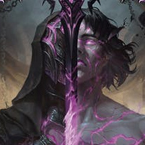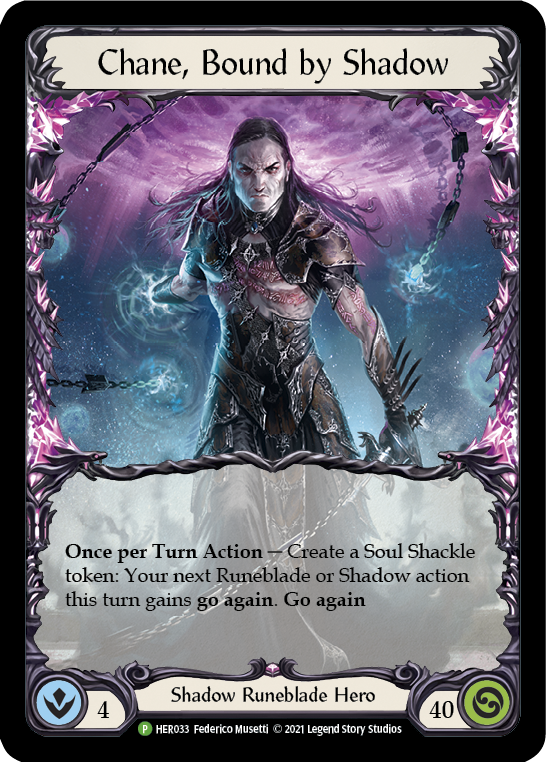
The story of Chane is a story of corruption by good intent and an unrelenting pursuit of a solution no matter the cost. Chane pushes his strategy forward at the cost of his deck's endurance, creating a frantic push-and-pull between dealing damage now and taking damage later.
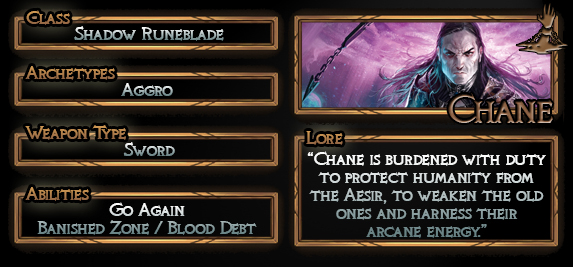
A Shadowy Past
Chane, Bound by Shadow was released in Monarch, the first Flesh and Blood set to introduce Talents. The Shadow Runeblade quickly rose to prominence as the dominant force in the 2021 Road to Nationals meta, powered by access to on-demand go again, Carrion Husk, and the efficient synergy of Seeds of Agony, Rift Bind, and Unhallowed Rites. In fact, his performance proved to be too dominant, leading to the suspension of Seeds of Agony, and paving the way for Briar, the Elemental Runeblade, to take on his mantle as the preeminent aggressive deck.
But Chane didn't take the banning of Seeds of Agony lying down. With the addition of Rosetta Thorn and Spellbound Creepers, alongside the previously untapped Belittle/Minnowism package, Chane found himself facing off against Briar in the finals of US Nationals.
With the unmitigated success of Briar and Chane during the Nationals season, Chane had yet another card banned, this time in the form of Plunder Run. However, Everfest brought with it several more tools for Chane to use, including Runic Reclamation, Shrill of Skullform, and Vexing Quillhand.
Everfest also brought a new rival: Bravo, Star of the Show, who- alongside Prism- became the top figure in the meta. After the first ever Pro Quest season was dominated by Starvo, Prism, and Viserai, LSS banned Awakening and suspended Bloodsheath Skeleta, which opened the door for Chane to shine once more. Chane took Viserai's place as the third deck at the top of the meta, going on to be the second most played deck at Pro Tour New Jersey, and eventually winning the entire event in the hands of PT1 Champion Pablo Pintor.
As of the conclusion of Pro Quest Season 2, Chane, Bound by Shadow reached the threshold for Living Legend status, and with the release of Uprising will no longer be legal in Classic Constructed. Instead, he will take up the mantle of a Living Legend and patiently await the arrival of its namesake format.
Shackling for Fun and Profit
Chane's hero ability makes him one of the most effective aggressive heroes in Flesh and Blood. On-demand access to go again is incredibly powerful, and he gets it all for the "cost" of creating a Soul Shackle.
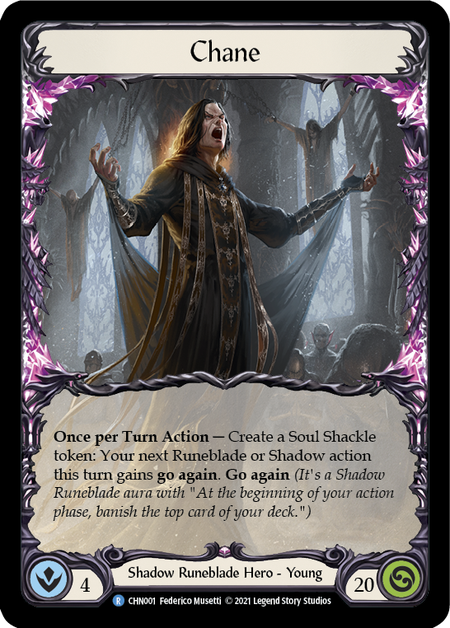

Rules Tip: The go again comes from Chane's ability and not from the Soul Shackle itself. The Soul Shackle is the cost of using Chane's ability.
And Another Rules Tip: If you create a Soul Shackle and then play a Shadow or Runeblade action that already has go again, Chane's ability will be consumed and you will not gain any additional benefit from his ability!
The benefits of go again to an aggressive strategy are fairly obvious, but it is worth noting that Chane can give it to any Shadow or Runeblade action. This means attack actions, non-attack actions, weapon abilities, and equipment abilities are all fair game as long as "Shadow" or "Runeblade" appears in the type line at the bottom of the card. (A personal favorite of mine is giving Crown of Dichotomy's ability go again to make sure that my Tome of the Arknight gets a perfect hit!)
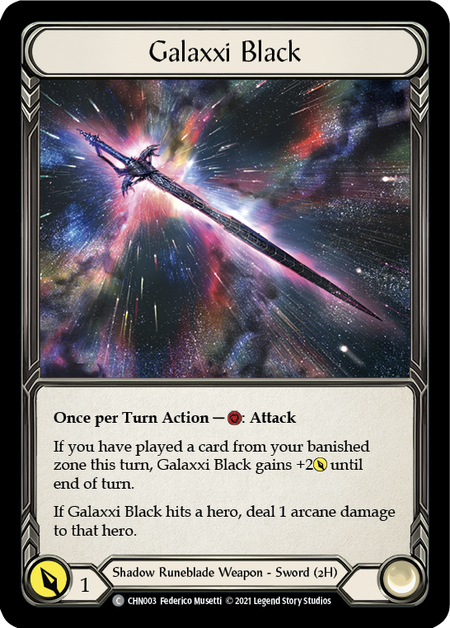
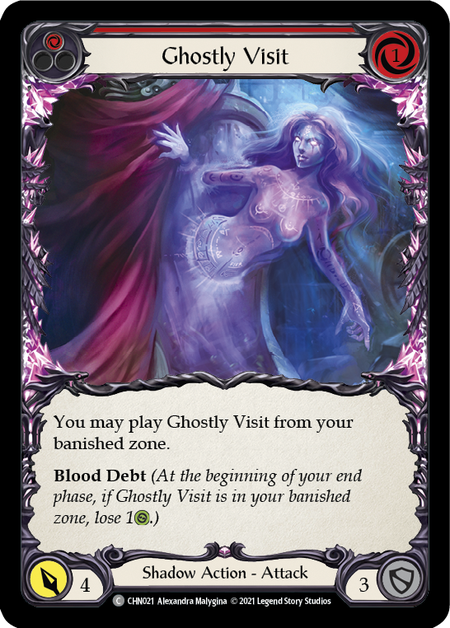
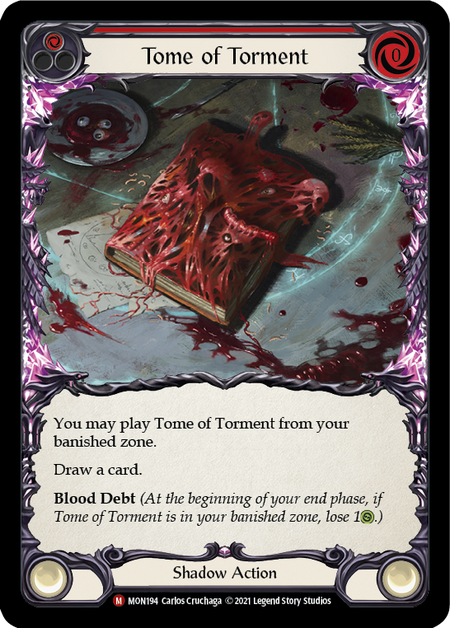
Chane's ability to create Soul Shackles has a second facet as well, and that is where the Blood Debt mechanic comes in. Cards with Blood Debt are able to be played from the banished zone, so if our devotion to Ursur is strong and we are fortunate enough to banish those cards via our Soul Shackle triggers, we effectively have a bigger hand to play with.
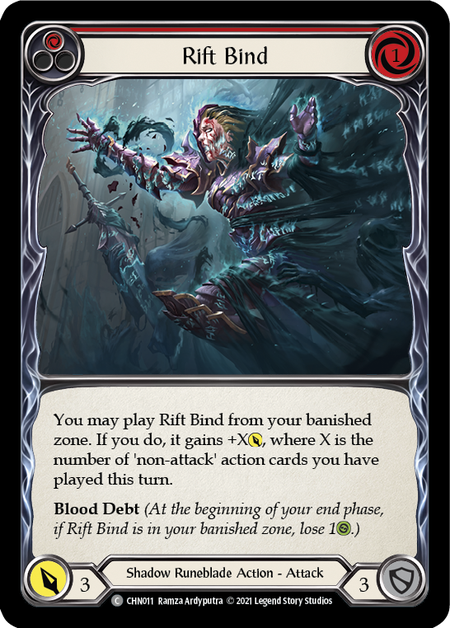
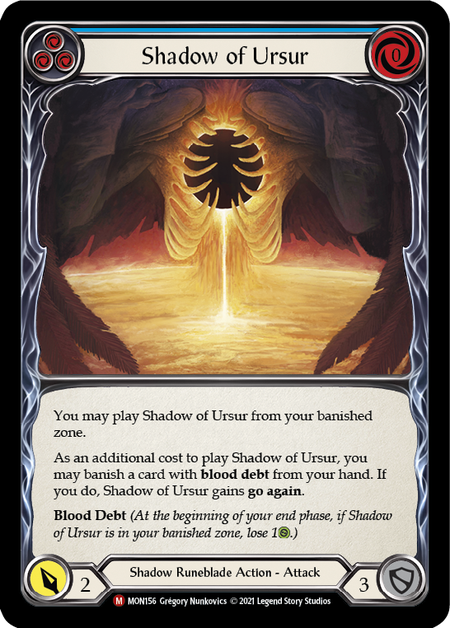
There is some risk here though: if we don't play our Blood Debt cards before our turn ends, we will lose one life for each card that remains banished. As we accrue more and more Shackles over the course of a game, at the beginning of each turn we will progressively banish more cards. This powers up our turns, but also exponentially increases the speed with which we go through our deck.
If you use your entire hand and make a shackle each turn, your number of cards used will look like this:
Used this turn (hand + shackled) | Total used this game (played, pitched, banished):
- 4+0 | 4
- 4+1 | 9
- 4+2 | 15
- 4+3 | 22
- 4+4 | 30
- 4+5 | 39
- 4+6 | 49
- 4+7 | 60
Assuming you start with 60 cards in your deck, that is a grand total of 8 turns before the only cards remaining in your deck are the ones that you have pitched during the game. If you don't shuffle or draw any extra cards, the first 4 cards you pitch will be your final hand, and anything under that will likely be the last cards you banish.
Knowing this pattern and how to work with it can be incredibly powerful, but is also quite skill-testing, particularly once you start to factor in things like drawing extra cards, shuffling, skipping a turn of creating new Shackles, or not using all the cards in your hand. As good as Chane is at being aggressive, there is no doubt that his ability to setup an overwhelming late game turn can be just as impressive.
The Shadow Armory
Runeblades have access to some of the most powerful weapons and equipment in the game- and Chane is no exception. While Duskblade was so strong that it had to be preemptively banned, Rosetta Thorn, Galaxxi Black, and even Reaping Blade are all powerful options. (Runeblades can also equip a scythe, but it has yet to make a compelling case for itself.)

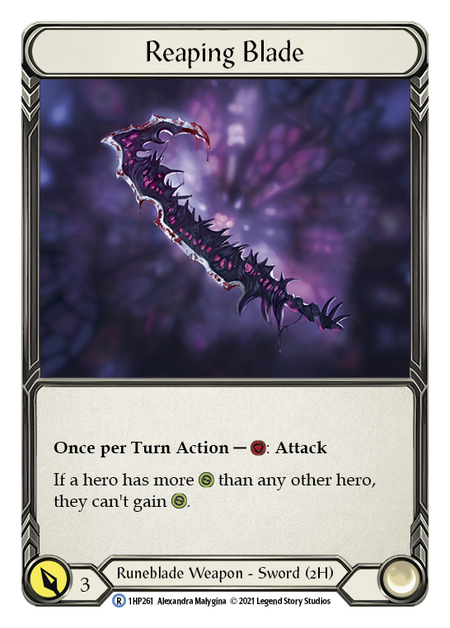
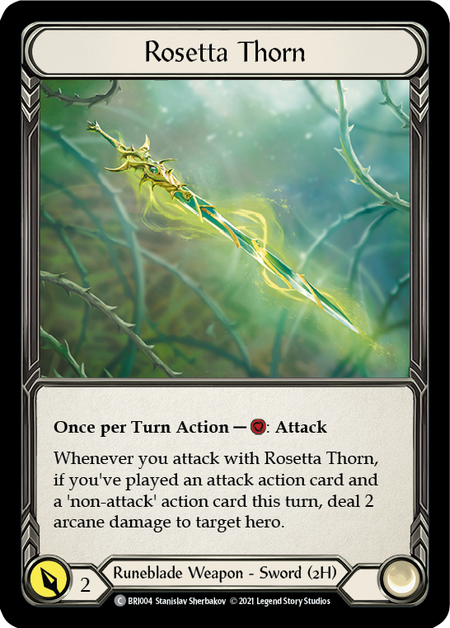
Chane boasts arguably the most powerful lineup of equipment in the game. Carrion Husk, Grasp of the Arknight, Arcanite Skullcap, and Spellbound Creepers have historically formed the primary lineup, which can represent up to 11 defense just sitting in play. Grasp is good for the occasional Runechant on turns when we have resources to burn.
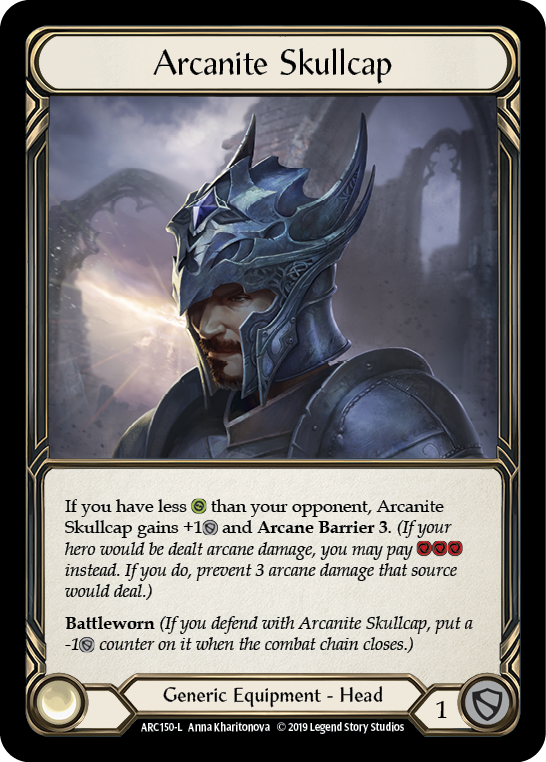
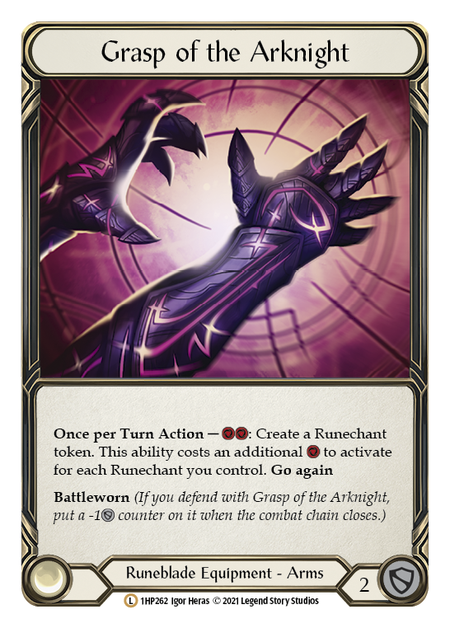
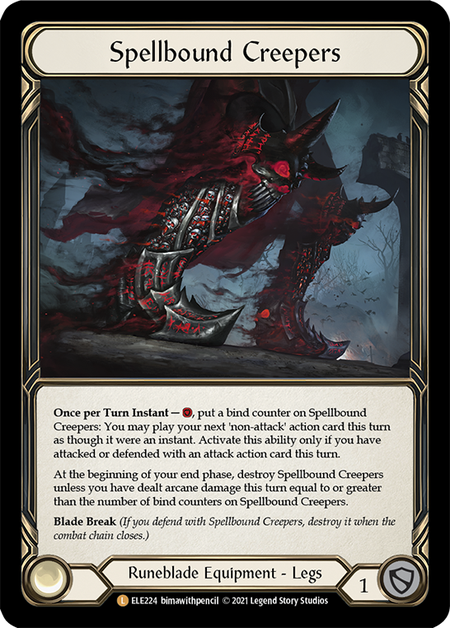
Skullcap is important for racing, and the Arcane Barrier 3 is sometimes relevant into opponents wielding Rosetta Thorn. Spellbound Creepers help facilitate some of Chane's most explosive turns, netting action points by allowing us to play things Shadow Puppetry or Mauvrion Skies at instant speed.
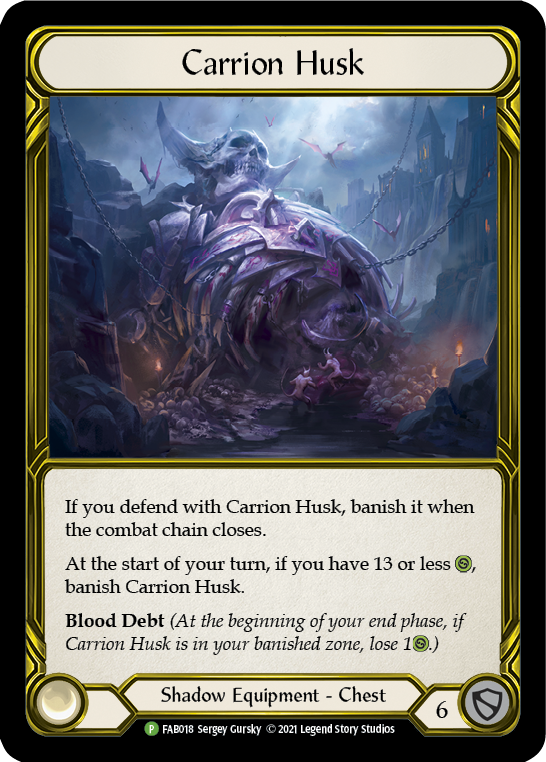
Carrion Husk is just incredible. This card is a massive tempo swing. Blocking an entire Command and Conquer or preventing the Crush effect from a Spinal Crush without spending a card is an enormous boon for Chane; and even when it just blocks for 6 damage, the blood debt will take 6 full turns to make that a poor value proposition- games are nearly always done before you reach that point.

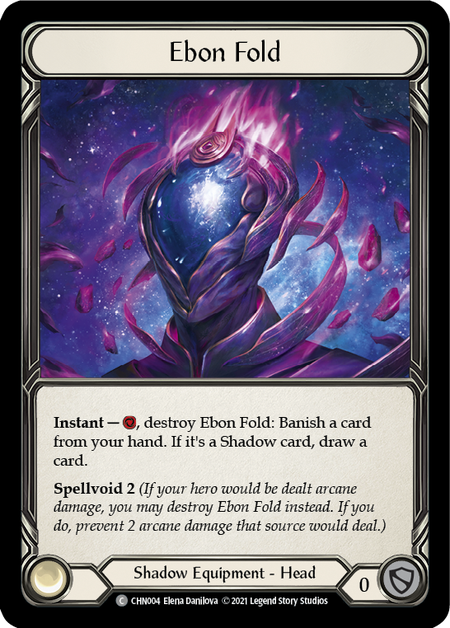
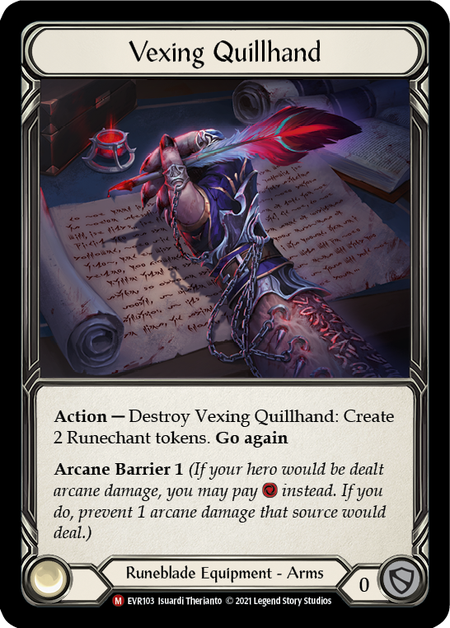
Vexing Quillhand was a great addition from Everfest, and in conjunction with Bloodsheath Skeleta make an effective tool when you needed to have an explosive turn against an opponent trying to fatigue you. Four effectively free resources pays for a Howl from Beyond and nearly any attack the deck is interested in playing.
Ebon Fold is a great tool into fatigue matchups where it can allow you to stash Eclipse in your banished zone. It also teams up with Vexing Quillhand and Nullrune Robe when it's time to play against Kano.
Budget Tip: Aether Ironweave is a fantastic budget-friendly option, and even has advantages and lines of play of its own.
The Runeblade Tax
Whenever an opponent faces a character capable of dealing arcane damage, there's an evaluation of equipment that needs to be done. While Chane is perfectly capable of dealing some arcane damage via Rosetta Thorn or the occasional Runechant, the suspension of Seeds of Agony really cut into Chane's arcane output. That means Arcane Barrier 1 is more optional for opposing heroes who are trying to race against Chane. Conversely, decks looking to fatigue Chane often bring Arcane Barrier 2 in order to be able to fully block the damage from Rosetta Thorn.
For a full discussion of the opportunity costs your opponent must weigh when facing a Runeblade- and a core understanding of the Runeblade class without the Shadow flavor- check out the FAB101 on Viserai.
Specializations and Synergies
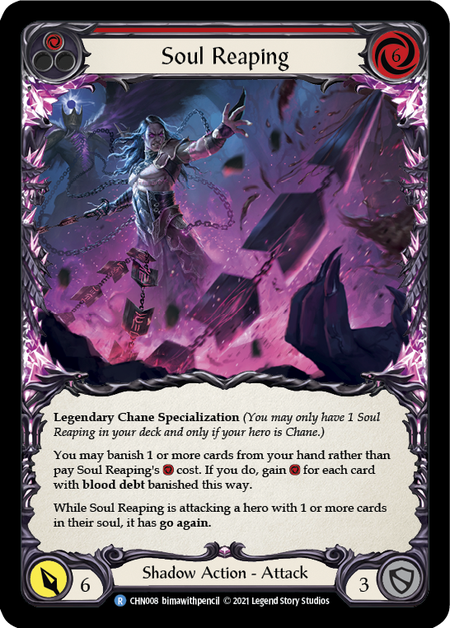
Soul Reaping is Chane's most powerful attack. As with most things Blood Debt, Soul Reaping's "downside" is turned into extra upside, even rewarding Chane with resources for his trouble. Its status as a Legendary card (as in 'one per deck', not rarity) balances out how incredible this attack is. In plenty of games you just banish it, but if you ever draw it with a hand full of Blood Debt cards, your opponent is not going to be pleased.
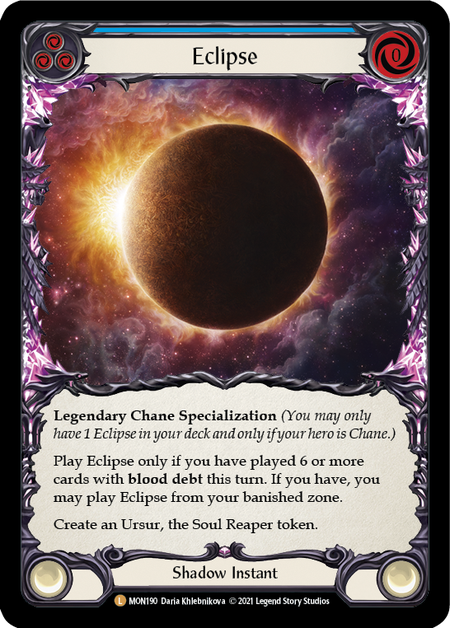
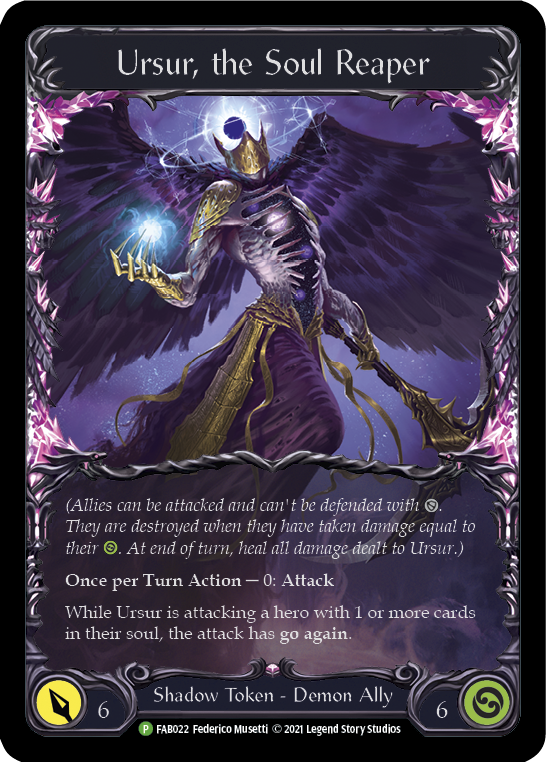
Eclipse requires a real amount of work in order to get its payoff, but Ursur is absolutely worth it. As a Shadow ally, Ursur can take advantage of the go again from Chane's hero- which means that as long as it stays in play, your turns start with an attack for 6 with Go Again for no cost. Ursur is the solution to Chane's endgame, as he is a payoff for playing a bunch of Blood Debt cards in the same turn. If your opponent is already low on life, Chane can potentially fatigue opponents by repeating this sequence: Grasp of the Arknight to make a Runechant, make a Soul Shackle, Ursur attack for 6, Rosetta Thorn for 2. If they're low enough on life where they're forced to defend constantly, it becomes an "Ursur lock" until eventually the opponent runs out of cards to defend with and dies to the demon.
Pro Tip: The Eclipse endgame is more difficult to pull of in Blitz due to the faster gameplay of lower life totals. But don't let that discourage you from trying it!
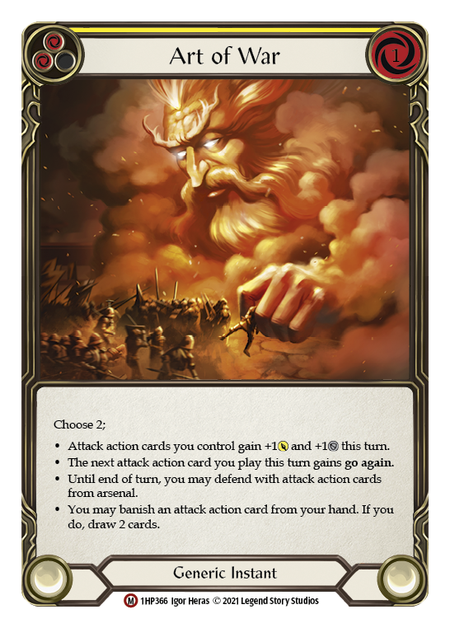
Art of War in Chane is pretty close to unfair, as it tends to look a lot like a draw 3 that either buffs all our attacks for the turn or gives our next attack go again.
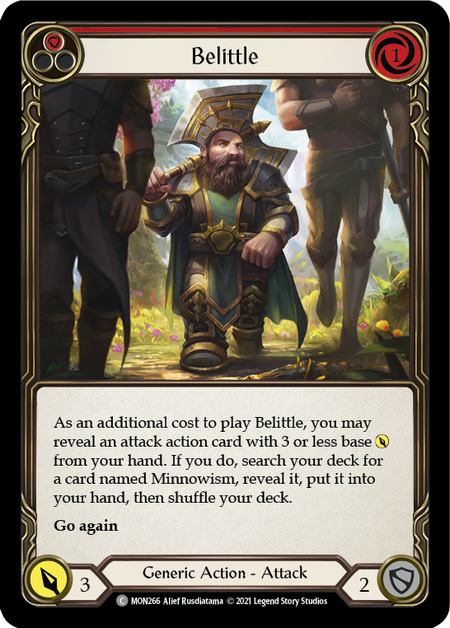
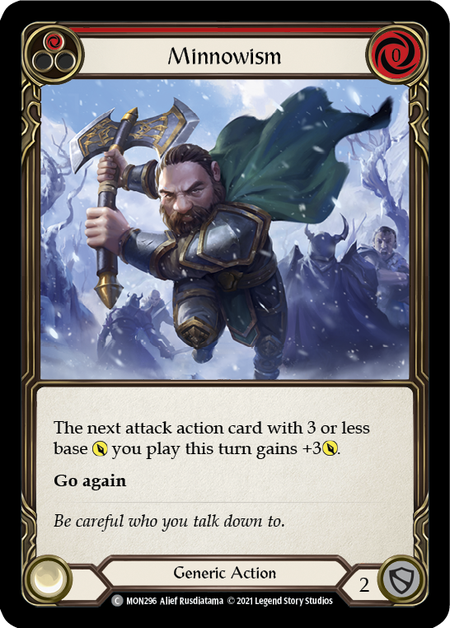
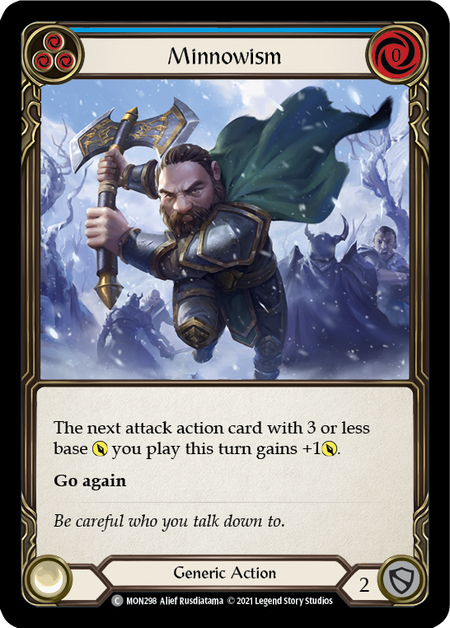
The Belittle and Minnowism package appears pretty innocuous at first, but it really is the closest thing to adding more copies of Art of War to the deck. Chane naturally plays many attack actions with base power 3 or less, like Bounding Demigon, Rift Bind, Shadow of Ursur, Shrill of Skullform, and Vexing Malice, so it's relatively easy to fulfill the additional cost on Belittle. This allows us to search up whichever copy of Minnowism is right for the situation. If we're light on resources, we get a blue. If we've got plenty of resources, we grab a red and attack for more damage. The ability to search up Minnowism helps ensure we can play certain attacks that can only be played from banish if we've played a non-attack action, like Bounding Demigon and Unhallowed Rites.
Card Legality
Classic Constructed
- Chane, Bound by Shadow has attained Living Legend status and can longer be played in CC as of June 24th, 2022. Seeds of Agony will become unsuspended at this time.
- Seeds of Agony is suspended until Chane attains Living Legend status (on June 24th, 2022).
- Bloodsheath Skeleta is suspended until Viserai, Rune Blood becomes Living Legend.
Blitz
- Sonata Arcanix is suspended pending a decision in a future Banned and Suspended announcement.
- Seeds of Agony is suspended until Chane attains Living Legend status.


